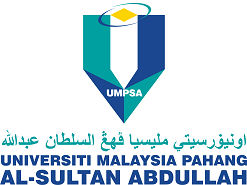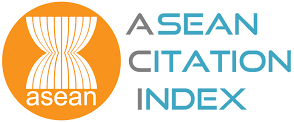Response prediction of reverse engineered free form surface by design of experiments
DOI:
https://doi.org/10.15282/jmes.12.4.2018.18.0364Keywords:
Reverse Engineering, Response Surface Methodology (RSM), Deviation, Coordinate Measuring Machine (CMM), Analysis of Variance (ANOVA)Abstract
Reverse engineering is a new technique employed in product design wherein original drawings or pertinent technical data are not available. Reverse engineering technology acquires the conceptual designs from the existing products and consequently creates digital product models. In the product design these digital products are employed with optimization principles. The investigation in this paper encompasses 3-D reconstruction of products by the reverse engineering technique and consequently identifying the deviations between the original product and the reverse engineered model. Design of experiments is a systematic study in the consideration of the governing parameters and there by arriving at the optimization stage. In this investigation response surface methodology method is employed by taking the input parameters viz noise level, smoothing level and triangle count %; and there by identified the responses namely deviation and curvature deviation occurred from the existing physical model. The deviations and curvature deviations are in the range 0.0266 to 0.0621 mm and 0.543 (54.3%) to 0.645 (64.5%) respectively which indicate that the reverse engineered freeform surface is not exhibiting significant difference when compared to the original CAD model. Response surface contours are constructed for determining the optimum process conditions.
References
Rekoff M, On Reverse Engineering, IEEE Transactions on Systems Man and Cybernetics. 1985; 3: 244–52.
Chikofsky E, Cross J Reverse Engineering and Design Recovery: A Taxonomy. IEEE Software. 1990; 7: 13– 17.
Otto K, Wood K, Product Evolution: A reverse Engineering and Redesign Methodology. Research in Product Development. 1998; 10: 226–43.
El-Hayek N, Nouira H, Anwer N, Damak M, Gibaru O Reconstruction of Freeform Surfaces for Metrology. Journal of Physics: Conference Series. 2014; 483: 012003/1-12.
Carlos Relvas, António Ramos, António Completo, and José António Simões, Accuracy Control of Complex Surfaces in Reverse Engineering, International Journal of Precision Engineering and Manufacturing. 2011; 12: 1035-1042.
Shuo-Jen L, Dar-Huan C. A laser sensor with multiple detectors for freeform surface digitization. Int J Adv Man Tech. 2006; 31:474-82.
Korosec M, Duhovnik J, Vukasinovic N. Process modeling of non-contact reverse engineering process. In: Proceedings of the 7th WSEAS international conference on signal processing, computational geometry and artificial vision (ISCGAV'07, Vouliagmeni, Athens, Greece: WSEAS Press. 2007; 87-96.
Xi F, Liu H, Feng Y. Error Compensation for three-dimensional Line Laser scanning data. Int J Adv Manuf Technol. 2001; 18:211-16.
Shiou FJ, Ali YC. Development of a non-contact multi-axis reverse engineering measurement system for small complex objects. In: 7th international symposium on measurement technology and intelligent instruments. J Phys: Conf Ser. 2005; 13:178-81.
Marjan Korosec, Joze Duhovnik, Nikola Vukasinovic, Identification and optimization of key process parameters in noncontact laser scanning for reverse engineering, Computer-Aided Design. 2010; 42; 744-48.
Nabil Anwer and Luc Mathieu, From reverse engineering to shape engineering in mechanical design CIRP Annals - Manufacturing Technology. 2016; 65:165–68.
G. Sreeram Reddy, Manzoor Hussian and V. V.Satyanarayana, Experimental Investigation To Optimize Parameters of Reverse Engineering Technology For Reconstructing Freeform Surfaces. International Journal of Mechanical Engineering and Technology. 2016; 7: 165–74.
A.M.A. Al-Ahmari, Javed Aalam, Optimizing parameters of freeform surface reconstruction using CMM, Measurement. 2015; 64: 17–28.
Montgomery, C, Design and Analysis of experiments, 4th ed. Wiley, New York, 1997.
Cochran WG and COKGM, “Experiments Design” Charles Etutrile Company, Japan, 1968.
Pravin R. Parate and Ravindra B. Yarasu, Application of Taguchi and ANOVA in Optimization of Process Parameters of Lapping Operation for Cast Iron, Journal of Mechanical Engineering and Sciences (JMES).2013;4:479-487.
Md. Ashikur Rahman Khan, M.M. Rahman, K. Kadirgama, M.A. Maleque and M. Ishak, Prediction of Surface Roughness of Ti-6Al-4V in Electrical Discharge Machining: A Regression Model , Journal of Mechanical Engineering and Sciences (JMES).2011;1:16-24.
V.V. Satyanarayana, A. Chennakesava Reddy, and S. Sundararajan, Reduction of Casting Porosity in the LostWax Process Choosing Right Coating Materials by Response Surface Criteria, CEMILAC Conference, Ministry of Defence, India, 20-21 August, 1999; 110-14.
T. Gatzke, C. Grimm, M. Garland and S. Zelinka, curvature maps for local shape comparison, International conference on Shape Modelling and applications, SMI05. 2005; 244-53.
G. Sreeram Reddy, Manzoor Hussain, J. Jagadesh Kumar, V.V. Satyanarayana, A Novel Approach To Compute Gaussain Curvature Deviation Using Reverse Engineering Technique, International Journal of Mechanical and Production Engineering Research & Development. 2016; 6: 17-24.
Downloads
Published
Issue
Section
License
Copyright (c) 2018 The Author(s)

This work is licensed under a Creative Commons Attribution-NonCommercial 4.0 International License.






